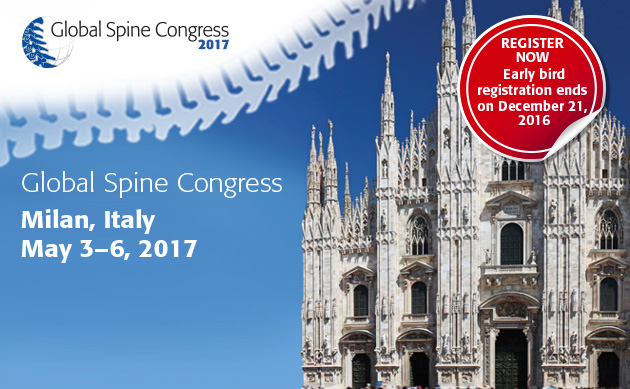Creating cross cultural bonds for spine surgeons: The Germán Ochoa Traveling Fellowship 2016 experience.
Dr Ali Haghnegahdar was the winner of the 2016 German Ochoa Traveling Fellowship Award. His plan was to attend Queens Medical Center (QMC) in Nottingham to work alongside Michael Grevitt (Chairperson of AOSpine Education Commission) and bring with him one of his young Fellows from Iran.
Dr Haghnegahdar recently returned from the UK and was very grateful for the experience.
Why did you choose QMC in Nottingham for your trip?
QMC is a well-known spine center world-wide. There are spine surgeons from both ortho and neuro schools. They are working in all fields of spine surgery, from minimally-invasive to advanced deformities. They are leading educators in spine fellowship programs. There are two Iranian-British senior surgeons, Mr Mahdian and Mr Shaffafi. They are working on state of the art spine surgery and are also experienced in fellow's education. This is very helpful for Iranian fellows to become adapted with their new situation at QMC much more easily. There are fellows from many countries. A real multinational, multicultural environment is present at QMC. Almost 20 fellows are involved in research and clinical activities. This is an indicator of the high level of acceptance of this center. There are 3 operating rooms available every day and a vast variety of spine pathologies are treated each week. This provides a chance for short term fellows to observe a wide range of pathologies from deformities, degeneration, traumas, to tumors. Language is a barrier for overseas trainees. English is the most popular and easiest for Iranian surgeons. This is another advantage of QMC. And last but not least, the role of Mr Michael Grevitt is very important. He has outstanding ability in teamwork and leadership. He encouraged me to apply and accepted that QMC be my host very generously. When I arrived at QMC and observed his excellence in surgical management, skills, and education, I never regretted my selection of QMC.
"The organization has already given me so much during my entire professional life. Thus, I do not expect to get something back in addition. As the current president, I am continuing to serve the organization. The opportunity to contribute to shaping the future of the AO is what motivates me to donate my time and my energy."
Do you feel it was useful for your fellow, Dr Hamid Rezaee, to also attend the hospital?
Yes definitely. This was a great opportunity for him to touch a different fellowship program. I am sure his short stay at QMC opened a new vision in spine surgery for him. Comparing the Shiraz and Nottingham fellowship programs started a kind of motivation for improvement inside him. I would like to have 2 more fellows with me but unfortunately it remains a wish at this stage.
I understand you got the opportunity to visit St Thomas's Hospital in London. Do you feel the hospitals vary from city to city?
Yes. I recognize the same sorts of differences when I travel between Shiraz and Tehran. Living, traveling and teaching in bigger cities is more complicated. For every step more time and energy is utilized in metropolitan cities. It took time to get permission for access to the OR at St Thomas. I appreciate Mr Lucas's support for helping me achieve this goal. In Nottingham life is more smooth and friendly. In London you enjoy life at a more expensive price.
I know you planned this trip to create cross cultural relationships. Do you feel you have been successful in this endeavor?
Yes. This trip provided an environment of exchange between two centers. I firstly received a request to have an observer fellowship at QMC a few days ago. I will send it to Professor Grevitt soon. I hope we can exchange fellows and invite consultants from QMC to visit our center. It may be attendance in a course or symposium or a short stay to share their experience with Iranian colleagues.
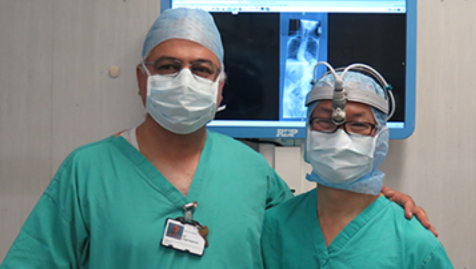
Working in Iran must be very different to working in the UK. What barriers are there for you in Iran that do not affect spinal surgeons in the UK?
No; there is not a significant difference between spine surgery in Iran and UK. Nowadays we are living in a global village. All improvements in science and changes in skills and instruments are well addressed and available in Iran. Let me say, AOSpine provides a unique utility that helps all spine surgeons world-wide to become up to date. In some aspects, we have some limitations in Iran. Regarding the economic situation and long term sanctions, we had a shortage of some kinds of instruments for short periods of time. This did not have a huge impact on treating patients. There are some limitations in hospital budgets over recent years. However, overall, they will be improved after elimination of the sanctions. These types of problems are unimaginable in UK.
Finally how has AOSpine influenced and supported you in your professional career and why would you recommend becoming an AOSpine Member?
Put simply, AOSpine opened a door to an international community of spine surgeons for me. There is no other comprehensive organization that allows all spine related specialists to join so simply and engage in its programs. Furthermore, each region has its own AOSpine, founded by local surgeons creating a sense of community.
This democratic organization provided me a chance to gain knowledge, improve my skills, and act as a faculty and tutor. Its courses are designed from basic to master level. There are vast opportunities for fellowships, being a faculty, and doing research. All of these make an environment for growing over time. As a dynamic process, there is constant change in responsibilities and positions. This provides the chance to meet new faces and to be involved and fostering scientific dimensions of AOSpine. My final point in answering this question is that internal relationships within AOSpine are based on respect, friendship, and rule of law. This makes AOSpine as a big family. You feel yourself at home when you are working at or attending an AOSpine event, even when you encounter challenging situations. All of these have helped me greatly during my career.
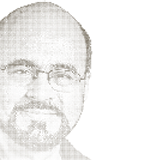
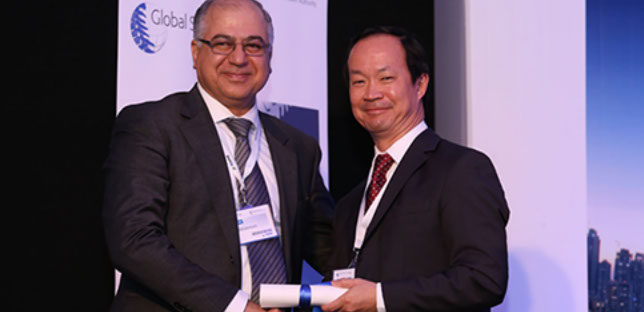
Meet Alaa Ahmad, AOSpine Member Representative
It's been 6 months since the election of the the first Member Representative in the history of AOSpine at the Global Spine Congress in Dubai. Alaa Ahmad joined the AOSpine International Board (AOSIB) as Member Representative Elect on the first Trustees meeting after the election in early July 2016. In July 2017, he will start his official term as Member Representative with voting rights in the AOSIB for one year.
In this interview, the representative of over 6,200 AOSpine Members shares what he's been up to since the election, and the projects he is currently working on.
How was your experience so far as an AOSpineMember Representative, and what projects have you been involved in so far?
The past months have already been an incredibly rewarding experience. I have had the pleasure of meeting and engaging with wonderful doctors from my region, the Middle East, whom I didn’t have a chance to get to know before. I have also met doctors from North America, Latin America, Southeast Asia, Europe, and Africa. For me, listening to the experiences of these surgeons from around the globe underlies how much we can learn from one other, and how many common challenges and concerns we face, despite our rich cultural and institutional diversity.
Within AOSpine, I have been working with Klaus Schnake, the AOSpine Community Development Chair, and Ginesa Aviles and her team. I am also participating in the AOSpine Community Development interregional meetings and their regular calls.
With the support of the Global Spine Congress (GSC) 2017 organization team, and in particular Jeff Wang, I am trying to arrange an interregional symposium as part of the GSC 2017 activities.
"For me, listening to the experiences of these surgeons from around the globe underlies how much we can learn from one other, and how many common challenges and concerns we face, despite our rich cultural and institutional diversity. "
Another great experience has been meeting new people at AOSpine, who are not surgeons, but who are experienced, very skilled, and highly professional in other fields. These people are specialists in areas like business administration and marketing. It's great to work with them and to get to know their way of thinking. I have always had interactions with AOSpine staff, but now that I am more embedded in the organization, I realize that there are a lot of things that one doesn't realize from the outside. These include the challenges with translations, and operational challenges, including difficulties with payments for countries where people can't have credit cards. I never thought about this before and there is a lot of work behind the scenes that one never gets to see unless you are really working in the organization.
You are representing over 6,000 members worldwide. What are the most important topics that you would like to discuss during your term as the AOSpine Member Representative?
At the international board meeting, I will bring up and discuss topics that are important at the level of individual membership and also from a broader perspective. My role is a two-way function: to promote the feedback and ideas of the members to the AOSIB, and also to communicate and explain the AOSIB decisions to members and to promote them across the regions.
At the level of the individual AOSpine Members, I will relay to the AOSIB the necessity of improving the networking activities in education and research between the regions and at interregional levels. This would involve research projects, symposiums, increased use of live surgeries, virtual surgery programs, the implementation of translation software programs to help involve non-English speaking members, and greater involvement in social media.
More broadly, I will emphasize to further the engagement of our members internationally in educational and research activities. It is important for AOSpine Members to feel that they are part of a family. It is also imperative that they feel exposed to and able to interact with other surgeons, educators, and researchers from around the world.
"More broadly, I will emphasize to further the engagement of our members internationally in educational and research activities. It is important for AOSpine Members to feel that they are part of a family. It is also imperative that they feel exposed to and able to interact with other surgeons, educators, and researchers from around the world."
I would also like foster interregional discussions to exchange experiences. One idea is to host a symposium on a designated topic that brings forth the different views from each region. These could consider: “How can we treat patients in countries with limited infrastructure and very little resources for surgeries that are very demanding in terms of surgery skills and financial resources?” or “How can we deal with such cases, what are the different perspectives and what are the experiences and challenges in the regions?”
Another topic that I am very interested in is virtual surgery. More and more, people rely on other sources of knowledge than journals, and the future definitely lies in distance learning with the ongoing revolution in the digital world. Especially in countries with limited resources, virtual learning, and therefore virtual surgery, will become an increasingly interesting topic. Sometimes, there is no experienced senior surgeon around who can teach young surgeons, so they need to teach themselves. I believe that this will revolutionize the educational system and the teaching of surgery.
"Especially in countries with limited resources, virtual learning, and therefore virtual surgery, will become an increasingly interesting topic. Sometimes, there is no experienced senior surgeon around who can teach young surgeons, so they need to teach themselves. I believe that this will revolutionize the educational system and the teaching of surgery. "
As an AOSpine Member, what does an AOSpine membership mean to you and why would you recommend someone to become a member of the organization?
To me, being an AOSpine Member means simply that you are never alone. You are with a group of people who are sharing knowledge and thoughts, and sometimes you even become friends.
As a doctor or surgeon, we are sometimes very isolated. We work a lot and are very busy. If you are a member of this community, you can share your challenges with highly skilled, excellent people from around the globe. You are part of something bigger, without any geographical borders, or other limits. Around the world, we often witness the unfortunate discourse that stereotypes people from different parts of the world. We enclose ourselves within our own communities and become less understanding and more self-centered. AOSpine is the opposite of that. As AOSpine Members, we champion openness, understanding, and a humanitarian vision for our patients and for our world. It makes me very proud to be a part of this organization and its membership community.
"As AOSpine Members, we champion openness, understanding, and a humanitarian vision for our patients and for our world. It makes me very proud to be a part of this organization and its membership community."
Looking forward, how do you wish to contribute to AOSpine’s vision?
Besides the points already mentioned, I want to work with doctors from all over the world on advancing the methods for spinal deformity management in children, which is my specialty. I think it is also important that the AOSpine vision incorporates not only the challenges facing children and their spinal surgeons, but also the gap between advanced and developing countries in this topic. I will always make sure that the challenges that our colleagues face in developing countries are at the front and center of our mission here at AOSpine.
In your first interview after the election, you mentioned that you want to more generally improve access to pediatric orthopedic services. Can you tell us more about that?
Improving access to pediatric orthopedic services is something that I am very passionate about. This lies close to my heart. The experience that I have should not stay in Palestine. I would like to make sure that is also of use in other places. I have treated more than 1,000 patients in my professional career so far, and I am moving more and more into research. I am currently working on my biggest dream—to improve pediatric spine services in sub-Saharan Africa and in other areas of need. I am also involved in a committee that is trying to establish an educational curriculum in pediatric orthopedics for residents.
I would like to invite all AOSpine members to get in touch with me. Also, I am keen to get answers to the following questions:
- What attracted you most about AOSpine to become a member and what does the membership mean to you personally?
- Why would you recommend to become AOSpine member as a surgeon?
- What is your best AOSpine experience?
Please send your answers to membership@aospine.org.
Thank you for your continuous support!
Alaa Azmi Ahmad, a citizen from Palestine living in Ramallah, works as a pediatric orthopedic surgeon, and is specialized in spinal deformity. He currently chairs orthopedic surgery at the only medical teaching hospital in Palestine, the An-Najah National University Hospital in Nablus. In parallel, he also serves as associate professor of medicine at the An-Najah National University. Additionally, he holds an adjunct assistant professor of medicine appointment at the University of South Carolina in Charleston, USA.
The majority of Ahmad's work is in spinal deformities, with a special interest in early onset scoliosis, especially with rib construct and vertebral modulation. Ahmad is married, and has two grown-up children.
Follow Alaa Ahmad on Twitter @alaaortho, connect with him on LinkedIn, or contact him at: alaaahmad@hotmail.com
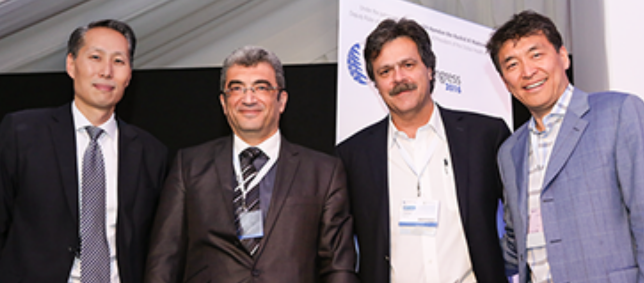
The GSC heads back to Europe for 2017.The AOSpine flagship event will take place in Milan, Italy, from 3-6 May, 2017 at the Milan Congress Center. For the 6th edition of the GSC, a record number of total 1048 abstracts for 25 available topics were submitted. The top 5 countries for abstract submission were USA, Korea, India, Italy and Germany, highlighting diversity of the Global Spine Congress.
High quality abstracts will gain entry into the events outstanding scientific program, providing the submitter an ideal chance to present his/her research to hundreds of spine specialists in Milan. Additionally, all accepted abstracts will be published in the Global Spine Journal.
The Scientific Program of the Global Spine Congress will include pre-Courses, AOSpine Symposia, Society Symposia, paper sessions and AOSpine Members-only sessions.
Register before December 21st, 2016 at www.gsc2017.org for an early bird discount.
AOSpine Knowledge Forum Tumor publishes Focus Issue II in Spine Oncology
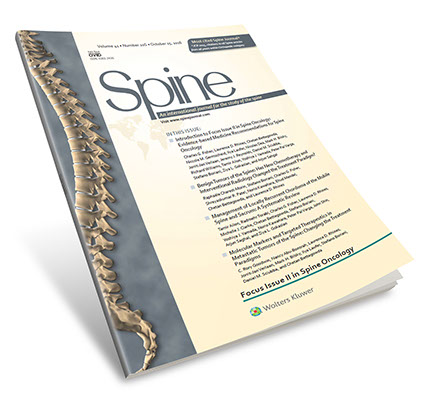
We are pleased to announce and share with you Focus Issue II in Spine Oncology, which is appearing in the Journal this month: Spine - October 15, 2016 - Volume 41 - Issue 20S.
Some of the AOSKFT members at the Global Spine Congress 2016 in Dubai, UAE. Top row, left to right: Michael Weber, Nicolas Dea, Jorrit-Jan Verlaan, Jeremy Reynolds, Aron Lazáry, Raphaële Charest-Morin, and C. Rory Goodwin.
Bottom row, left to right: Naresh Kumar, Arjun Sahgal, Chetan Bettegowda, Charles Fisher, Niccole Germscheid, Ziya Gokaslan, and Laurence Rhines.
The AOSpine Knowledge Forum Tumor (AOSKFT) has addressed and tackled current, real-world topics and new advancements in the field of Spine Oncology. Building upon Spine's Focus Issue I (2009), they have applied the same methodology, the Grading of Recommendations Assessment, Development, and Evaluation (GRADE), to provide the reader and clinician with trustworthy evidence-based medicine treatment recommendations for both primary and metastatic spine tumor patients.
"After seven years, and recent unprecedented changes in spine oncology, we felt it was appropriate to provide the community with an updated set of treatment recommendations," said Dr. Charles Fisher, Focus Issue Guest Editor. Dr. Fisher is the Professor and Head of the Division of Spine Surgery at the University of British Columbia and Chairperson of the AOSKFT.
Focus Issue II contains 16 articles, including a summary of the clinical treatment recommendations for primary and metastatic spine tumor patients. Some of the key articles include:
- Introduction to Focus Issue II in Spine Oncology: Evidence-based Medicine Recommendations for Spine Oncology
Charles G. Fisher, Laurence D. Rhines, Chetan Bettegowda, Niccole M. Germscheid, Ilya Laufer, Nicolas Dea, Mark H. Bilsky, Jorrit-Jan Verlaan, Jeremy J. Reynolds, Daniel M. Sciubba, Richard Williams, Tamir Ailon, Yoshiya J. Yamada, Peter P. Varga, Stefano Boriani, Ziya L. Gokaslan, and Arjun Sahgal - Benign Tumors of the Spine: Has New Chemotherapy and Interventional Radiology Changed the Treatment Paradigm?
Raphaële Charest-Morin, Stefano Boriani, Charles G. Fisher, Shreyaskumar R. Patel, Norio Kawahara, Ehud Mendel, Chetan Bettegowda, and Laurence D. Rhines - Management of Locally Recurrent Chordoma of the Mobile Spine and Sacrum: A Systematic Review
Tamir Ailon, Radmehr Torabi, Charles G. Fisher, Laurence D. Rhines, Michelle J. Clarke, Chetan Bettegowda, Stefano Boriani, Yoshiya J. Yamada, Norio Kawahara, Peter P. Varga, John H. Shin, Arjun Sahgal, and Ziya L. Gokaslan - Molecular Markers and Targeted Therapeutics in Metastatic Tumors of the Spine: Changing the Treatment Paradigms
C. Rory Goodwin, Nancy Abu-Bonsrah, Laurence D. Rhines, Jorrit-Jan Verlaan, Mark H. Bilsky, Ilya Laufer, Stefano Boriani, Daniel M. Sciubba, and Chetan Bettegowda
Focus Issue II is the product of the interworking of the KF Tumor Steering Committee and associate members, which are comprised of experienced spine oncology surgeons, radiation oncologists, medical oncologists, pathologists, and researchers from multiple international centers, and also includes the input of key opinion leaders outside of the AOSKFT.
"This is an example of how well this group works together. It is a privilege to be part of such a strong and impactful team. We hope that these recommendations are helpful to the clinicians who are faced with managing these challenging patients," said Dr. Arjun Sahgal, member of the Spine Focus Issue Committee. Dr. Sahgal is an Associate Professor of Radiation Oncology and Surgery at the University of Toronto and Steering Committee member of the AOSKFT.
"We are grateful to those who were involved and who contributed to this body of work. We hope to continue to work together to deliver meaningful studies in the future," said Dr. Charles Fisher.
This work was financially supported by AOSpine International.
For further information about Knowledge Forum activities, please visit our website here.
As an AOSpine Member with the Membership Plus package you get free access to this publication!
Log in to your membership profile and download it.
If you enjoyed reading this article, please forward it to a friend and recommend him or her to become an AOSpine member.
A compendium of evidence-based treatment recommendations for spine oncology
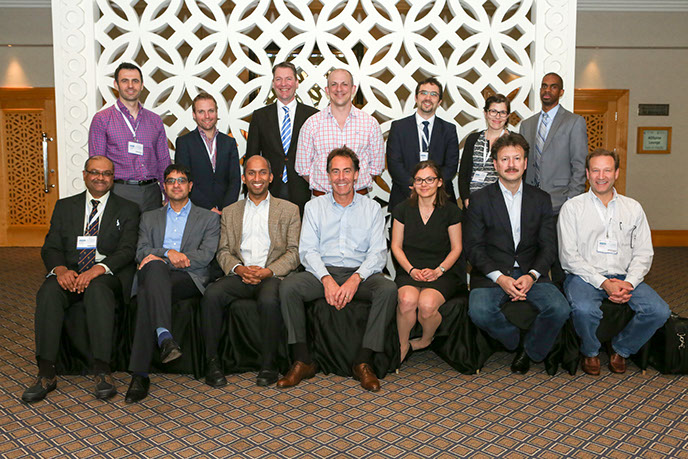
AOSpine Knowledge Forum Tumor successfully links rare human pathologic specimens to clinical outcomes
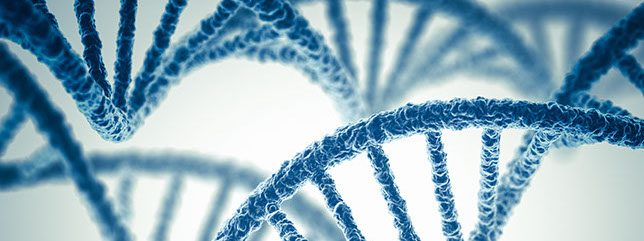
Evaluating the prognostic significance of the T (brachyury) gene SNP rs2305089 in spinal column chordoma
By assembling the largest collection of surgically-treated spinal chordoma, the AOSpine Knowledge Forum Tumor (AOSKFT) has been able to link rare human pathologic specimens to clinical outcomes to evaluate the prognostic significance of the T (brachyury) gene single nucleotide polymorphism (SNP) rs2305089 for local recurrence and overall survival.
The findings have been published online on September 23, 2016 in Neuro-Oncology, and show the first insights into the prognostic significance of SNP rs2305089 in spinal chordoma patients.
"This has been a tremendous achievement and could have only been possible with the close collaboration of surgeons, researchers, pathologists, and through global involvement. Being able to combine our data with other centers from North America and Europe is enabling us to better understand this rare disease," said Dr. Ziya Gokaslan, senior author of this paper. Dr. Gokaslan is a Professor and Chair of Neurosurgery at The Warren Alpert Medical School of Brown University and a Steering Committee member of the AOSKFT.
Chordomas are rare and aggressive bony neoplasms. Little is understood of their molecular biology and behavior. Recently, Pillay et al. 2012 discovered that the SNP rs 2305089 in the T (brachyury) gene was associated with chordoma development, which spurred the idea for this study.
"We are trying to identify biomarkers and develop targeted therapies for these patients, and this is the first step in that direction. Being able to understand the molecular and genetic profiles of these tumors and link them to clinical outcomes is very powerful," said Dr. Chetan Bettegowda, who is a lead author of this paper. Dr. Bettegowda is an Associate Professor of Neurosurgery at Johns Hopkins University School of Medicine and a Steering Committee member of the AOSKFT.
Managing these tumors is challenging. Achieving a wide en bloc resection surgery at the time of primary surgery has shown to positively influence progression-free survival and is further supported by the study's findings. Nevertheless, this surgical procedure is often associated with significant morbidity and is sometimes not feasible due to anatomical restraints within the spine. Looking for other treatments could lead to better patient prognosis and surgical decision-making.
"We are extremely excited by these results and the recent advances in the molecular technologies and techniques, which are enabling us to better study these tumors. It is essential that we collect tissue, especially these rare primary tumors, through the creation and maintenance of multicenter tumor registries and tissue banks," said co-author, Dr. Charles Fisher. Dr. Fisher is a Professor and Head of the Division of Spine Surgery at the University of British Columbia and Chairperson of the AOSKFT.
The AOSKFT is continuing to conduct these types of studies for primary spinal column tumors and also for metastatic spine tumors. For further information about Knowledge Forum activities, please visit our website here.
To access the complete publication, please click here.
This work received financial support by AOSpine International.
Classification and Assessment of Instability in Thorocolumbar spine fractures – How CT and MRI improve decision process?
The decision on how a surgeon treats thoracolumbar fractures is related to the morphology and stability of the fracture. Spine surgeons rely on Computed Tomography (CT – source of information for bony injury) and Magnetic Resonance Imaging (MRI – for assessing ligamentous complex and neurologic elements) to guide their evaluation, diagnosis and treatment. Although a complete set of images would allow a detailed evaluation of a fracture, the availability of the devices, costs involved and the difficulties in performing an MRI in emergency settings might limit the access of surgeons to these diagnostic tools. Along with plain radiographs, either CT and MRI scans or both together are performed at many trauma centres. Knowing the exact contribution of these investigations would allow surgeons to choose the method that is most suitable for each type of fracture.
Therefore, the AOSpine Knowledge Forum Trauma (KF Trauma) decided to perform a survey based international study among spine surgeons to determine the adequacy and usefulness of radiographs, CT and MRI scans in accurately classifying spine fractures, assessing spine stability and in treatment decision making. Additionally, the study took into consideration the influence of surgeon's experience on these three topics. The study was led by Dr. S. Rajasekaran (Ganga Hospital, Coimbatore, India) in collaboration with KF Trauma Steering Committee members.
The findings were published online on June 4, 2016 in the European Spine Journal. A second publication has already been accepted in the Global Spine Journal.
The interesting results from this study show that radiographs alone are sufficient to correctly classify fractures 43.4% of the times and they are highly reliable in classifying unstable C-type injuries and mild fractures such as A0 and A1. However, CT scans were necessary for accurate identification of fracture subtypes A3, A4, B1 and B2, which required accurate demonstration of the fractures of the posterior wall. In patients without neurology, the role of MRI was very limited and restricted to the identification of an injury to posterior ligament complex. Regarding the assessment of stability, surgeons were able to make an accurate assessment with a CT on 79.3% of the cases and the decision changed with MRI in only few patients. Remarkably, surgeons’ experience did not have a significant effect on any of the parameters measured.
"There is no doubt that CT and MRI are needed to better understand posterior vertebral body fractures, canal compromise, status of the spinal cord and occult fractures. In the presence of high quality radiographs and CT scans, for a patient with intact neurology, the need for further MR imaging could be limited. The results from this study will help surgeons to choose the best approach for their spine trauma patients considering for example imaging costs or acute trauma settings," says the lead author of the study, Dr. S. Rajasekaran.
The AOSpine KF Trauma is focused on further validating the AOSpine Injury Classification System, developing outcome tools and is performing a trial of thoracolumbar burst fractures. For further information about KF activities, please visit our website here.
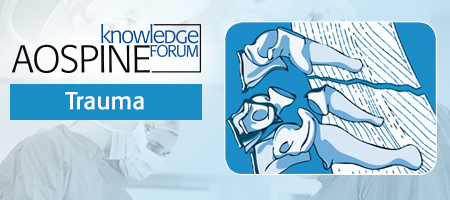
AOSpine Masters Series Volume 7: Spinal Cord Injury & Regeneration
World-renowned experts share the latest updates in translational research as well as surgical and nonsurgical strategies for treating spinal cord injury
Spinal cord injury (SCI) is a devastating, clinically challenging injury, leading to varying degrees of neurological function impairment and paralysis. Underlying biological mechanisms either inhibit or promote new growth in the spinal cord. Researchers have been making important discoveries about how neurons and their axons grow in the central nervous system and why they fail to regenerate after SCI. Although progress has been steady, there remains an urgent need to address issues in acute management such as early decompression and the use of biologics, as well as potential solutions for regeneration. Written by renowned experts in the ever-evolving field of SCI research and clinical practice, the 7th volume in the AOSpine Masters series is a state-of-the-art compendium on the latest in SCI diagnosis, spine surgery interventions, and long-term management.
 Editor Luiz Vialle commented: "This Master Series volume on Spinal Cord Injuries will be a milestone on the topic. The Editors, Michael Fehlings and Norbert Weidner did an outstanding job and the authors presented the most modern knowledge and research on SCI. This book is a "must" for scientists and physicians involved on SCI research or care."
Editor Luiz Vialle commented: "This Master Series volume on Spinal Cord Injuries will be a milestone on the topic. The Editors, Michael Fehlings and Norbert Weidner did an outstanding job and the authors presented the most modern knowledge and research on SCI. This book is a "must" for scientists and physicians involved on SCI research or care."
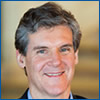 Guest editor Michael G. Fehlings said: "This AOSpine Masters Series text will enable physicians, surgeons, allied health professionals, researchers and students to access, in a succinct readable format, the latest information on the clinical management and translational research related to spinal cord injury."
Guest editor Michael G. Fehlings said: "This AOSpine Masters Series text will enable physicians, surgeons, allied health professionals, researchers and students to access, in a succinct readable format, the latest information on the clinical management and translational research related to spinal cord injury."
Each chapter contains pearls from leading spine specialists gleaned from the research laboratory and years of hands-on experience treating SCI patients in the emergency setting and long term.
Key Features:
- Pathobiology, assessment, and diagnostic considerations
- The use of biomarkers as predictors of functional recovery
- Surgical and nonsurgical interventions for traumatic SCI
- The role of neural stem cells and biologics in spinal cord repair
- Functional and epidural stimulation and brain-computer interfaces
The AOSpine Masters series, a copublication of Thieme and the AOSpine Foundation, addresses current clinical issues featuring international masters sharing their expertise in the core areas in the field. The goal of the series is to contribute to an evolving, dynamic model of evidence-based approach to spine care.
This essential textbook delivers invaluable insights to spine surgeons, spinal cord injury clinicians and researchers and trainees, from translational researchers to experienced researchers and clinicians experienced in the operative and non-operative management of spinal cord injury.
Editor: Luiz Roberto Vialle
Guest Editors: Michael G. Fehlings, Norbert Weidner
Title: AOSpine Masters Series Voumel 7: Spinal Cord Injury & Regeneration
PubDate: October 2016
Print ISBN: 9781626232273
E-Book ISBN: 9781626232280
EURO: €109.99
Dollar Price: $119.99
Pages: 225
Illustrations: 50
Format: Hardcover
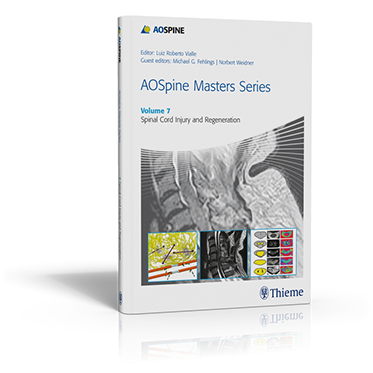
AOSpine Masters Series Vol.8:
Back Pain
Current statistics indicate that 75-80% of people worldwide will experience some form of back pain during their lifetime. Lumbar pain is a leading cause of disability - a global public health burden with serious economic implications. Written by internationally renowned spine experts, the 8th volume in the AOSpine Masters series is a concise, state-of-the-art overview on fundamental management strategies and current issues and challenges. The text covers the full age spectrum - from childhood to older adulthood - and contributing factors such as the sacroiliac joints, genetics, and spine infections.
Clinical evaluation, treatment options, recent research advances, and future perspectives are systematically examined and presented in a clear format. With commentary from leading authorities, this compendium presents candid discussion of significant challenges faced by clinicians who treat back pain. Among the issues addressed are managing patients who have undergone multiple operations, chronic back pain, failed spine surgery, and what to do when all nonsurgical and surgical options have been exhausted.
Key Highlights
- Economic considerations, risk factors, and legal aspects
- Neurological causes, including myopathies, neuromuscular disease, Parkinson disease, and dystonia
- Conservative treatment options such as drugs, physiotherapy, and complementary medicine
- The role of minimally invasive surgery in treating degenerative lumbar spine disease
- Must-read bibliographic references in every chapter
- Bullet lists of pearls and pitfalls summarize critical points and key concepts
 Luiz Vialle, Editor said: "The AOSpine Master Series Volume 8 on Back Pain is a must for all practitioners involved with degenerative disk disease. Current concepts for assessment, image, conservative care as well as updated review and recommendations on modern approaches and techniques make it the reference book you need in your shelf."
Luiz Vialle, Editor said: "The AOSpine Master Series Volume 8 on Back Pain is a must for all practitioners involved with degenerative disk disease. Current concepts for assessment, image, conservative care as well as updated review and recommendations on modern approaches and techniques make it the reference book you need in your shelf."
 Jeffrey C.Wang, Guest Editor, added: "Low back pain is a huge problem that exists in all areas of the world and accounts for a large amount of disability and loss of quality of life. It is important for any clinician to understand the impact of this disease and have an up to date knowledge of how to best treat these patients. This latest book in the Master’s Series addresses this important issue that is common to all throughout the world. This is a contemporary compilation of the latest evidence and expert opinions on how to best care for this condition and hopefully improve their quality of life. I believe this is critical information that all spine practitioners will need to keep up to date on the latest concepts in treatment."
Jeffrey C.Wang, Guest Editor, added: "Low back pain is a huge problem that exists in all areas of the world and accounts for a large amount of disability and loss of quality of life. It is important for any clinician to understand the impact of this disease and have an up to date knowledge of how to best treat these patients. This latest book in the Master’s Series addresses this important issue that is common to all throughout the world. This is a contemporary compilation of the latest evidence and expert opinions on how to best care for this condition and hopefully improve their quality of life. I believe this is critical information that all spine practitioners will need to keep up to date on the latest concepts in treatment."
 Claudio Lamartina, Guest editor, mentioned: "I have always experienced—and I am sure I am not alone—the need to make a synthesis on this topic, to merge the analytical scientific evidence with high-level experts knowledge, opinion and practical experience"
Claudio Lamartina, Guest editor, mentioned: "I have always experienced—and I am sure I am not alone—the need to make a synthesis on this topic, to merge the analytical scientific evidence with high-level experts knowledge, opinion and practical experience"
The AOSpine Masters series, a copublication of Thieme and the AOSpine Foundation, addresses current clinical issues featuring international masters sharing their expertise in the core areas in the field. The goal of the series is to contribute to an evolving, dynamic model of evidence-based approach to spine care.
Editor: Luiz Roberto Vialle
Guest Editors: Jeffrey C. Wang, Claudio Lamartina
Title: AOSpine Masters Series Volume 8: Back Pain
PubDate: October 2016
Print ISBN: 9781626232297
E-Book ISBN: 9781626232303
EURO: €109.99
Dollar Price: $119.99
Pages: 230
Illustrations: 133
Format: Hardcover
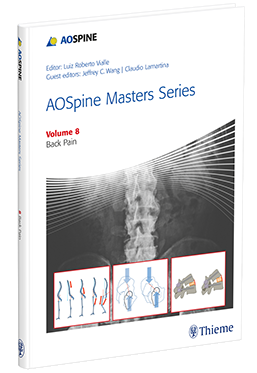
Newsletter 9 November 2016
